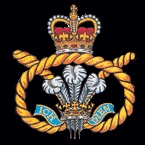Weekend 2 of the Kapiti Wargames Club's involvement with Peter Jackson's WW100 Project
Or "How I helped to win the war."
(That subtitle reminds me a bit of the title of a Spike Milligan book I once read...)
But literature aside, I was lucky enough to make my way down to the Weta Workshop to work on the ANZAC Diorama (again) yesterday.
Despairing, as I was supposed to be on call for our surgery, I implore my colleagues for help last week.
Clive and Romain step up, and take over my morning clinic, and the call for the rest of the day.
Yay! Thanks guys, you've allowed me another day of modeling, painting and wargaming bliss!
But literature aside, I was lucky enough to make my way down to the Weta Workshop to work on the ANZAC Diorama (again) yesterday.
Despairing, as I was supposed to be on call for our surgery, I implore my colleagues for help last week.
Clive and Romain step up, and take over my morning clinic, and the call for the rest of the day.
Yay! Thanks guys, you've allowed me another day of modeling, painting and wargaming bliss!
Going past Te Papa I couldn't but notice how apt the name of their contribution to the WW100 project was to our miniature efforts. The Scale of Our War.
Indeed.
The scale of "our" WW100 is 54 mm or 1:32 !
Some of us realised that we had not got photos of ourselves painting the figures.
Here I am, starting work on the the Maori contingent.
An (inadvertent) atmospheric shot of Turks making a dawn attack?
So I arrive to find the diorama proper missing. As expected, it had already departed to (what used to be) the Dominion Museum earlier in the week. The professional team from Weta Workshop was on site there with Rhys and the Perry brothers on hand for guidance.
I'm sure every one of us would have loved to go to the museum and work on the diorama in its final display position.There was limited space available, and only 4 or 5 of us could go. Bo Patterson waves us goodbye as he departs. Drat!
Anyhow, plenty left to do at the Weta Workshop, and plenty of time, so we get stuck into the job at hand. Varnishing Turks first, then ANZACs. 2 of the team are already in the spray booth at the back of Weta Workshop.
Most of the fugures will probably never be seen close-up again.
Each one is a work of art in its own right.
Turks ready for the spray booth and the varnish.
Another unplanned likeness - are they cresting the hill or at the parapet?
Sandbags coming along nicely Bruce and Shaun!
Bruce and Shaun are hard at work spraying and painting sandbags. Alan Perry sends me off to find more spraypaint. Off to Gordon Harris, Wellington's handy dandy artist supply store. Zoom back with the spraycans, and find something to do. Time for a few snaps fist:
ANZACs at the ready!
Roly and Rhys got their own unique models
As did other contributors to the project
I can still pick out the ANZACs I painted
A small number of British soldiers are also represented in the diorama
Varnish coat being applied in the spraybooth
Where is the Maori contingent ? What Maori contingent? Roly had painted some figures as Maori, but was told to stop, as it was the wrong figures. We painstakingly search the hundreds (nay, thousands) of painted figures: We come up with 18 painted figures that will pass as Maori. I pick out a few that will need minimal retouching to look Maori...
Executive decision.
No, we'll just build and paint the required 120 figures!
Dig into the last box of unpainted and unbuilt figures. What do we have? NZ Maori ! Someone had returned a number of unpainted and unbuilt figures. Time had run out, and they couldn't finish them.
The well oiled machine springs into action. Soon we have 3 tables humming: building, removing flash and filing, gluing and prepping, base coating and painting the figures destined to become the Maori contingent.
Next thing Rhys arrives with a TVNZ crew. They interview him, Sam and some of the other guys painting at table no 1.
Sam gets interviewed by the TVNZ crew
Filming the action at table no 1.
All too soon it is 5 o'clock! Tools down boys! I tear myself away from the figures I am painting. Oh, the compulsion... I won't be able to come back to finish them tomorrow. Rhys wants to know who will not be back on Sunday. I raise my hand. "Ok, you guys can come on the tour of the museum tonight. The rest can go tomorrow. See you at the pub !"
Outside the museum
Safety briefing and background from the Armchair General. No further photos,
What an experience NZ has in store for them. Can't wait for it to open.
Kiwi on the balustrade. No other photos inside, sorry.
Night at the museum
In the pub with some of the real-life models for the diorama and their creators.
And some good ale, of course.
































